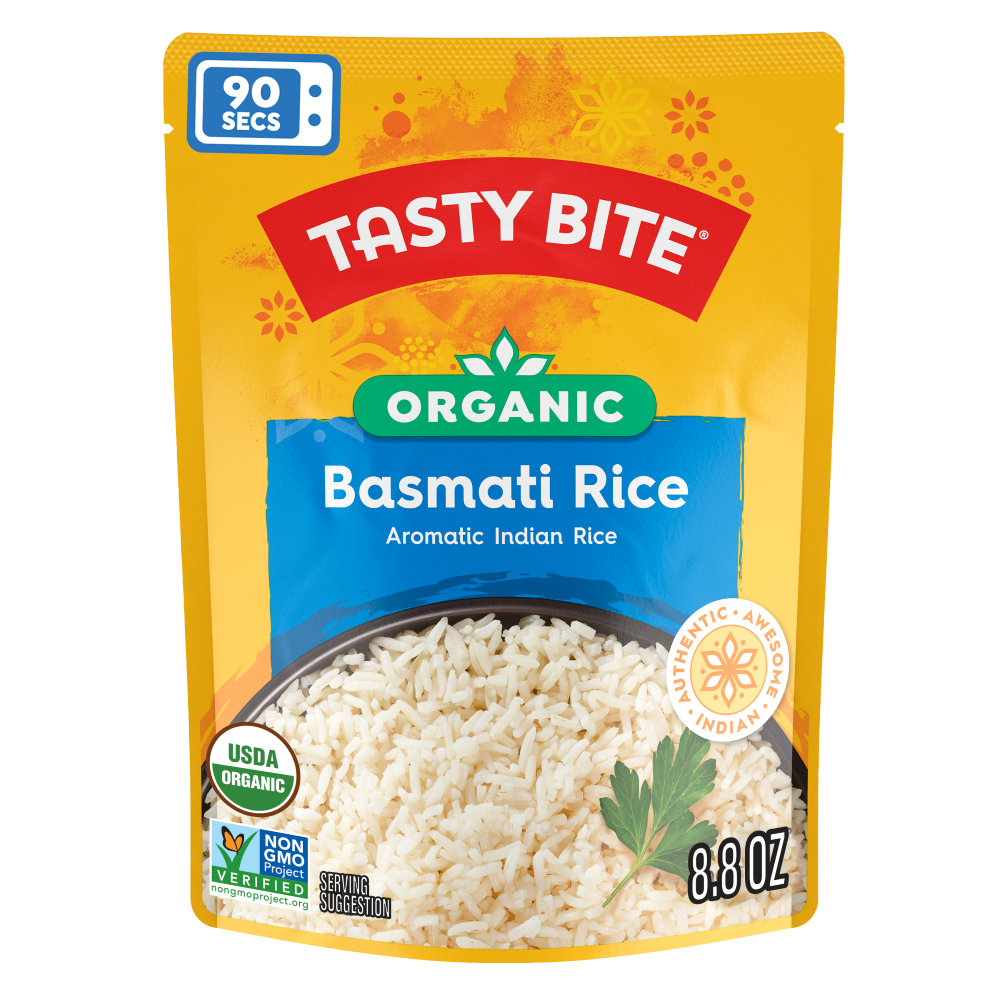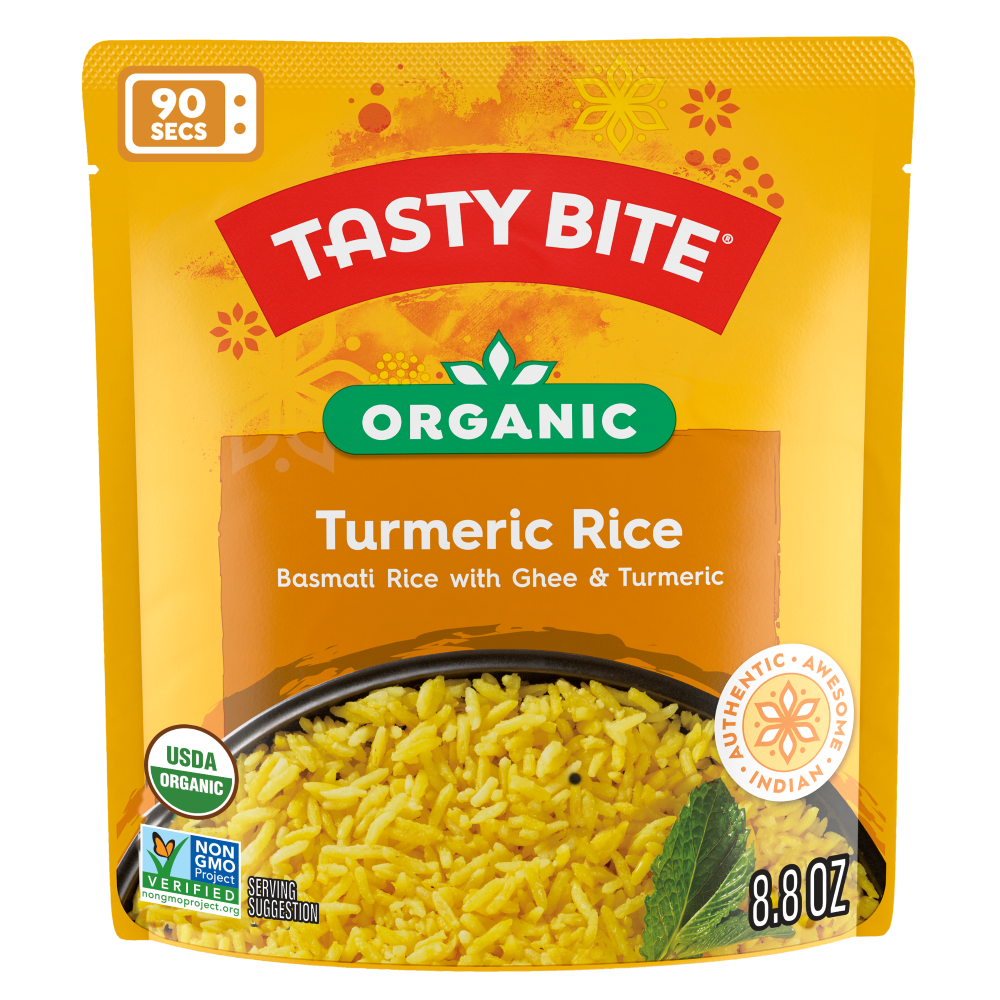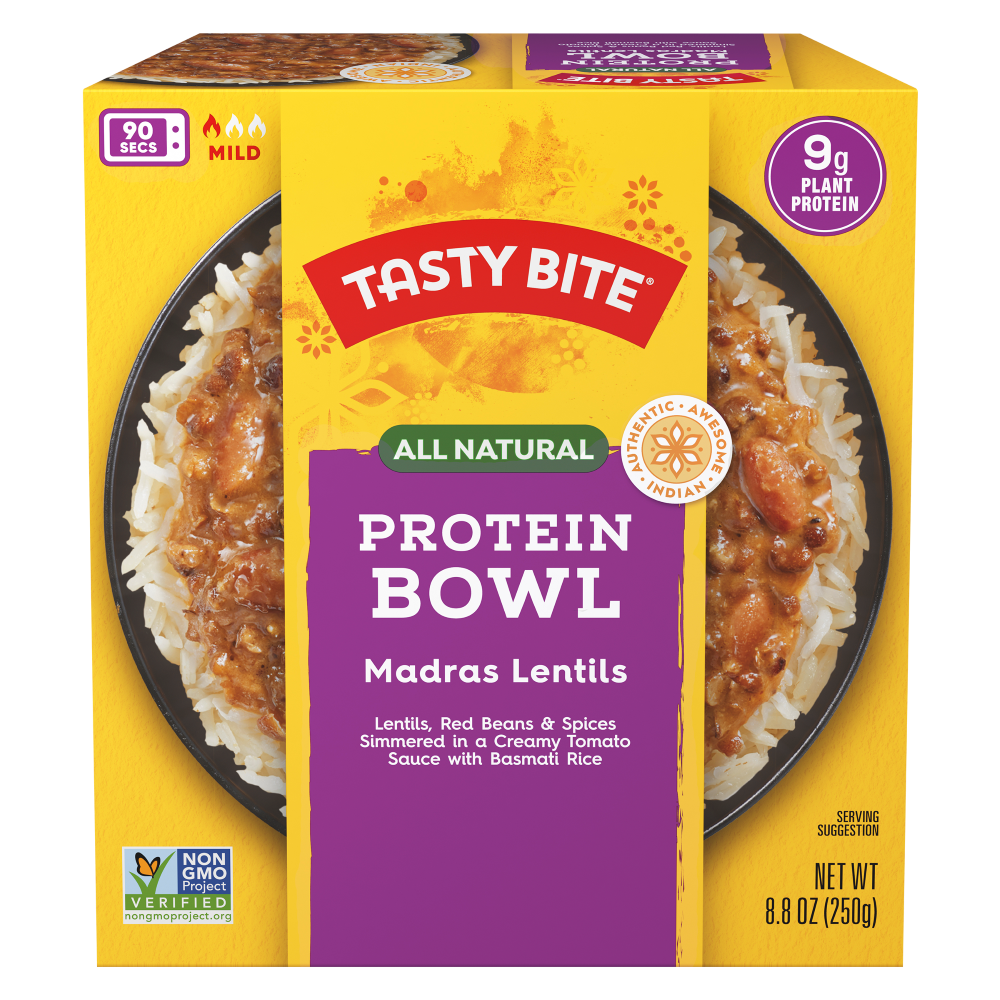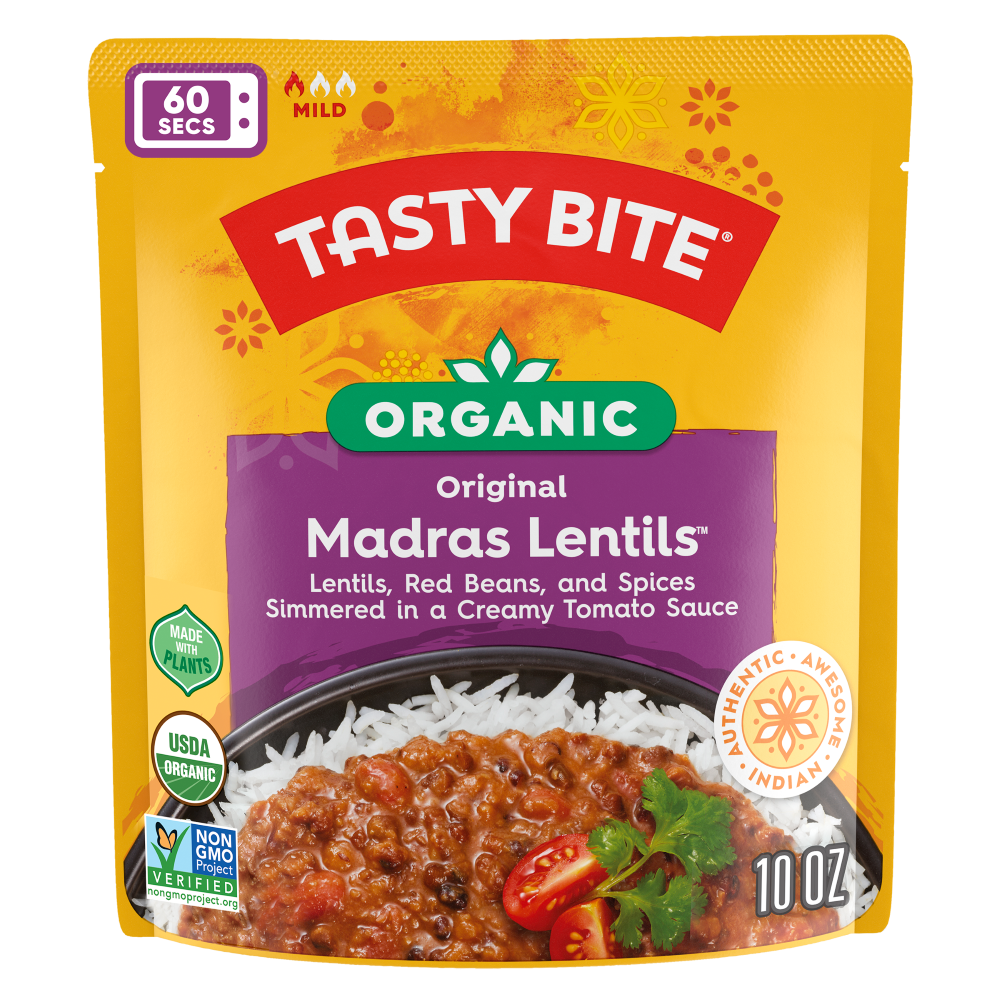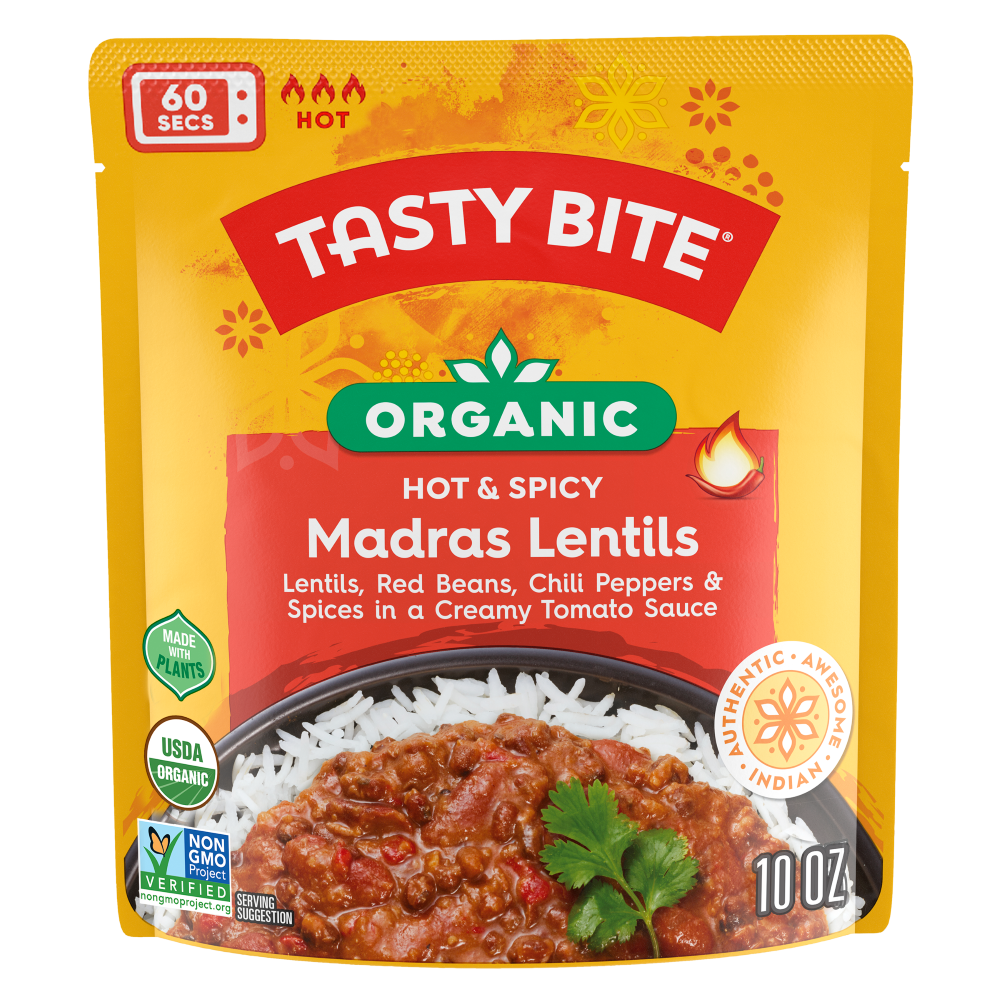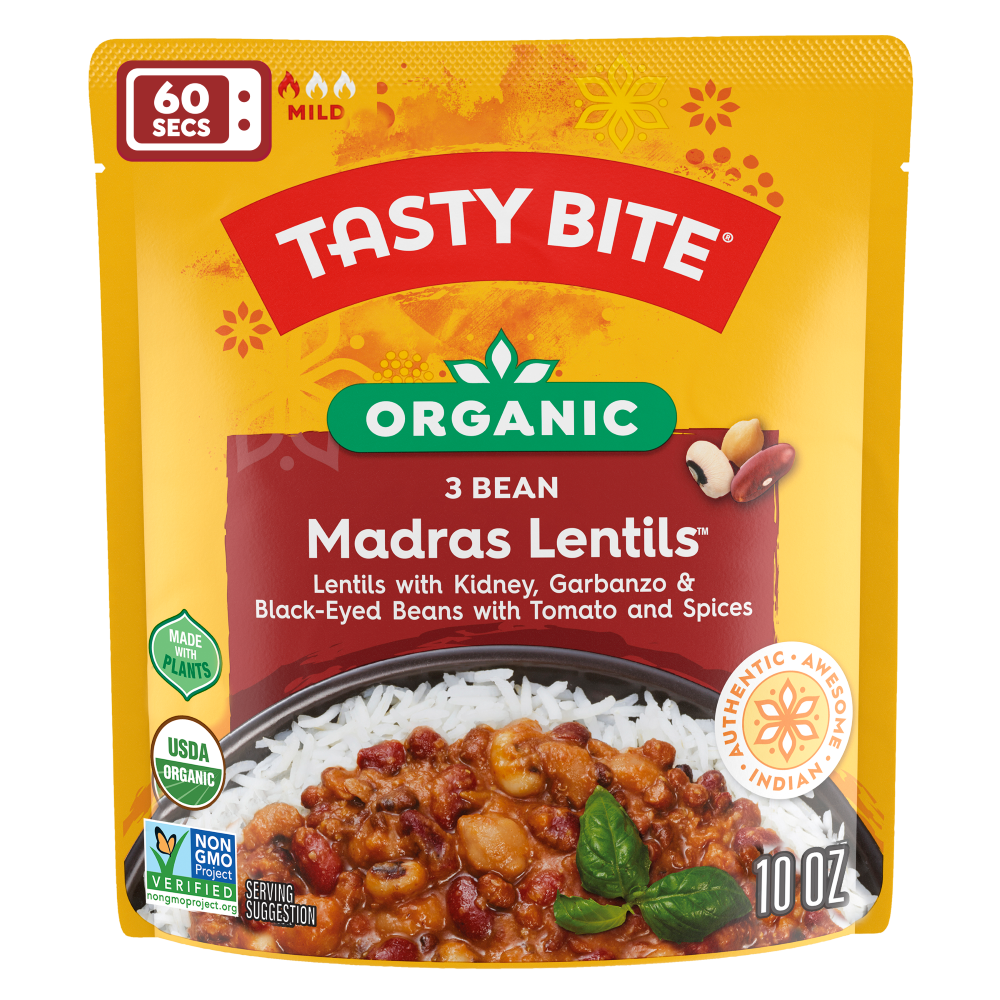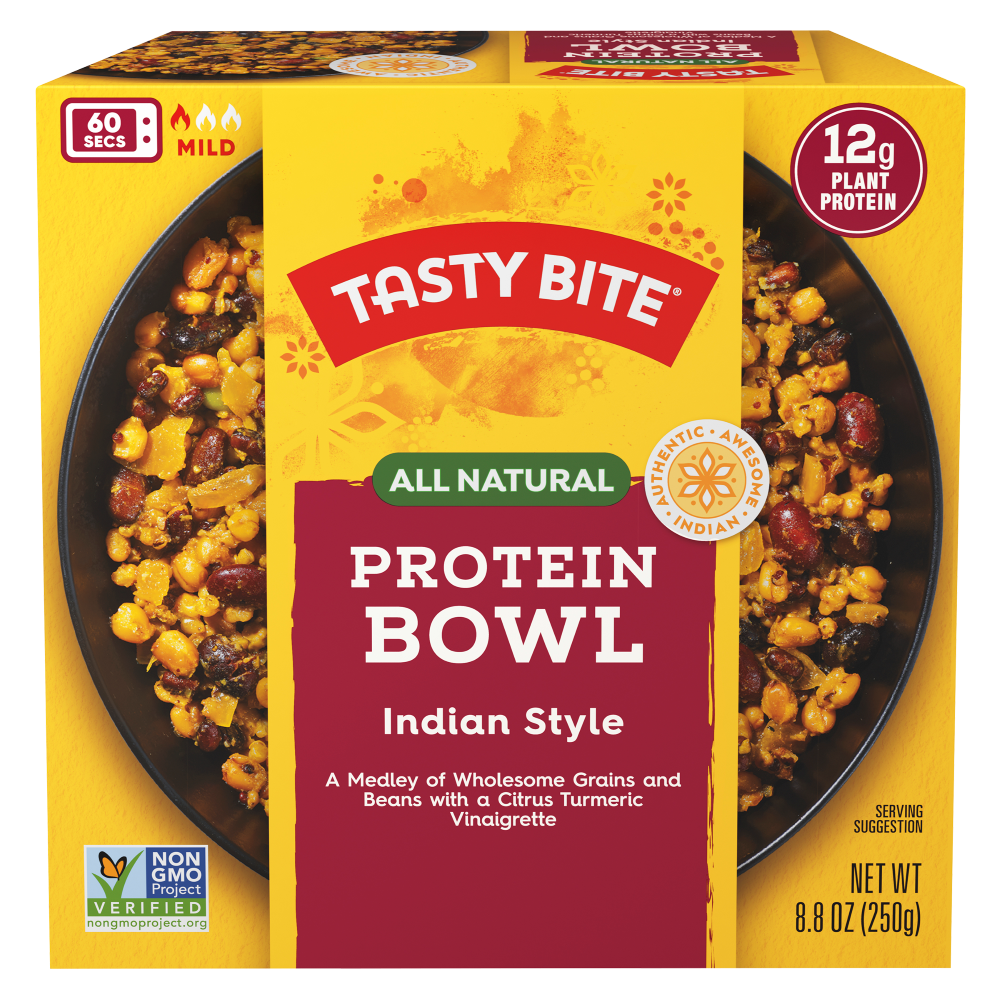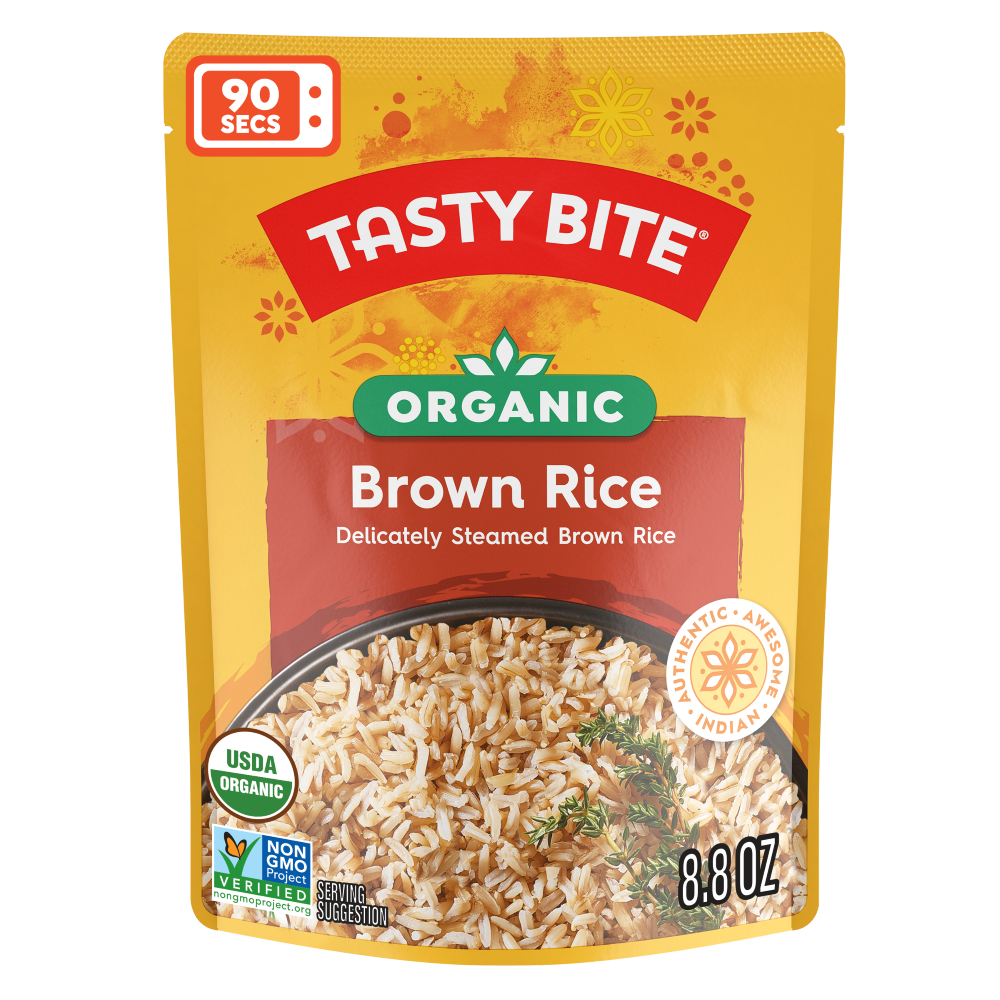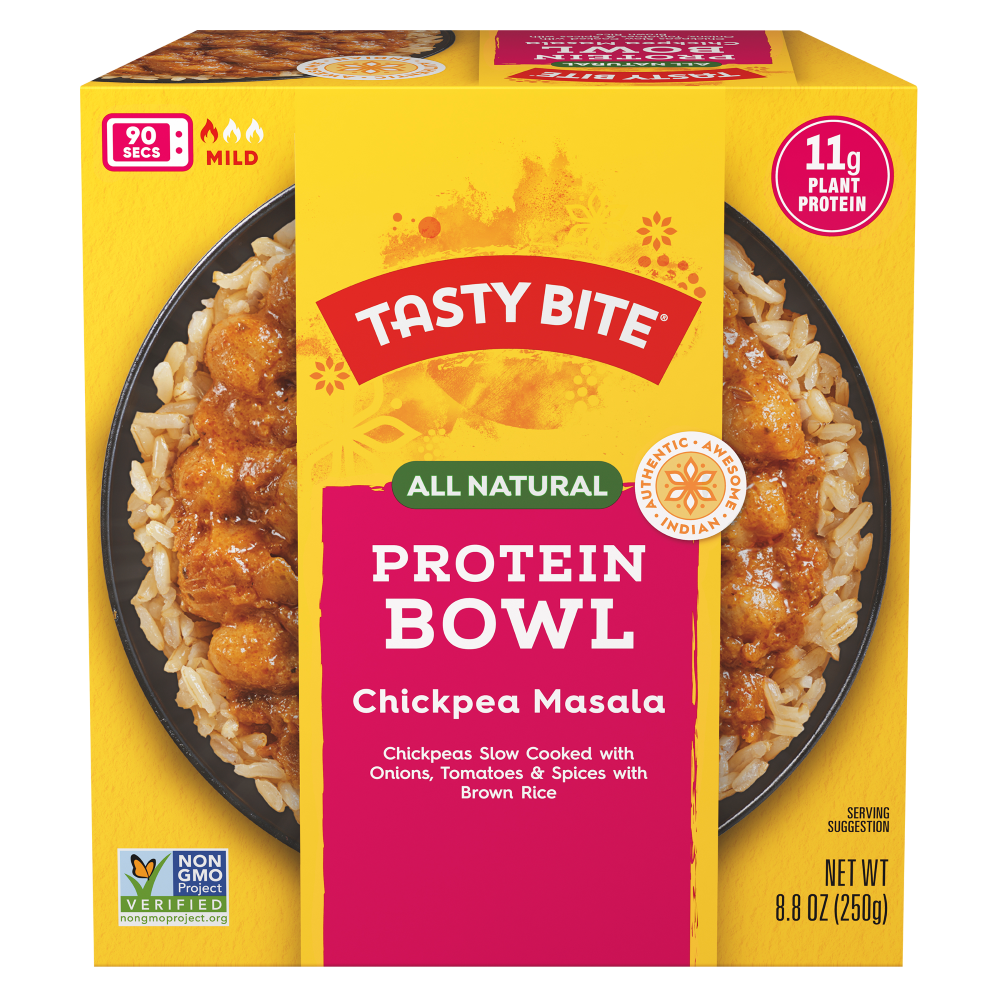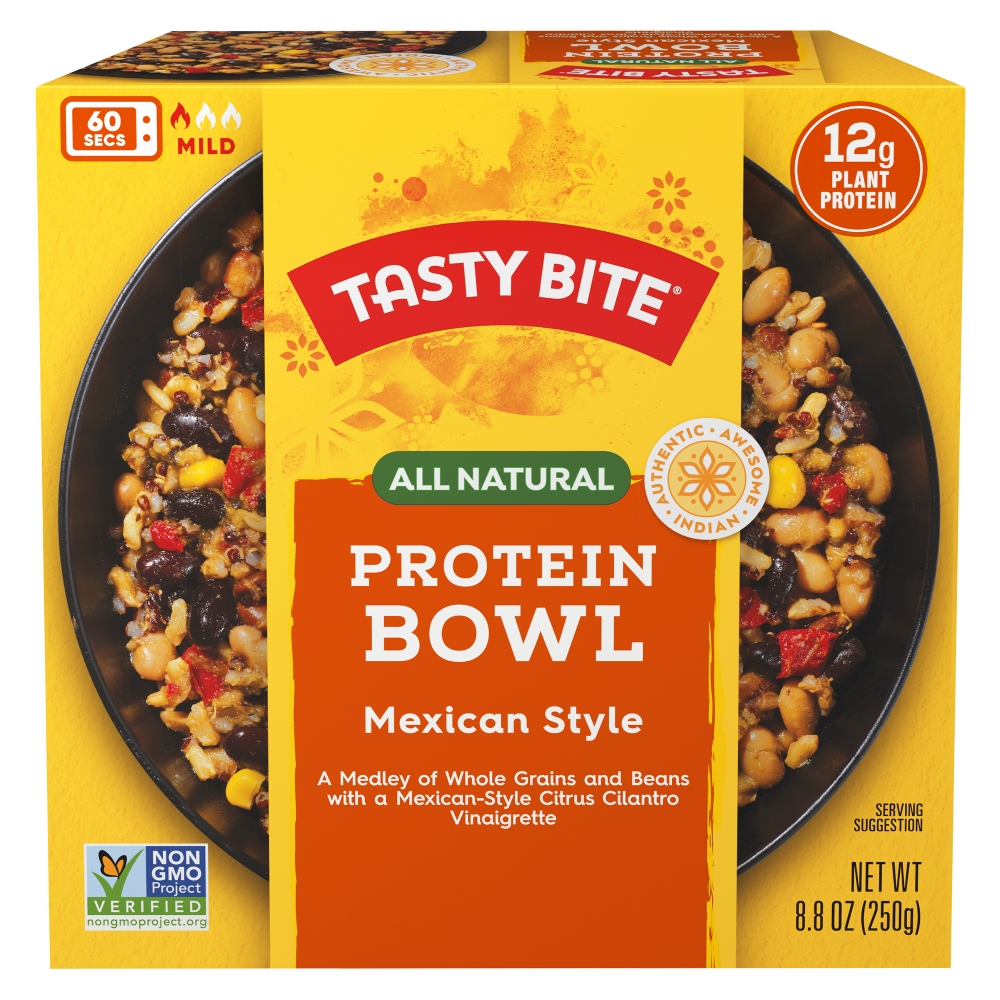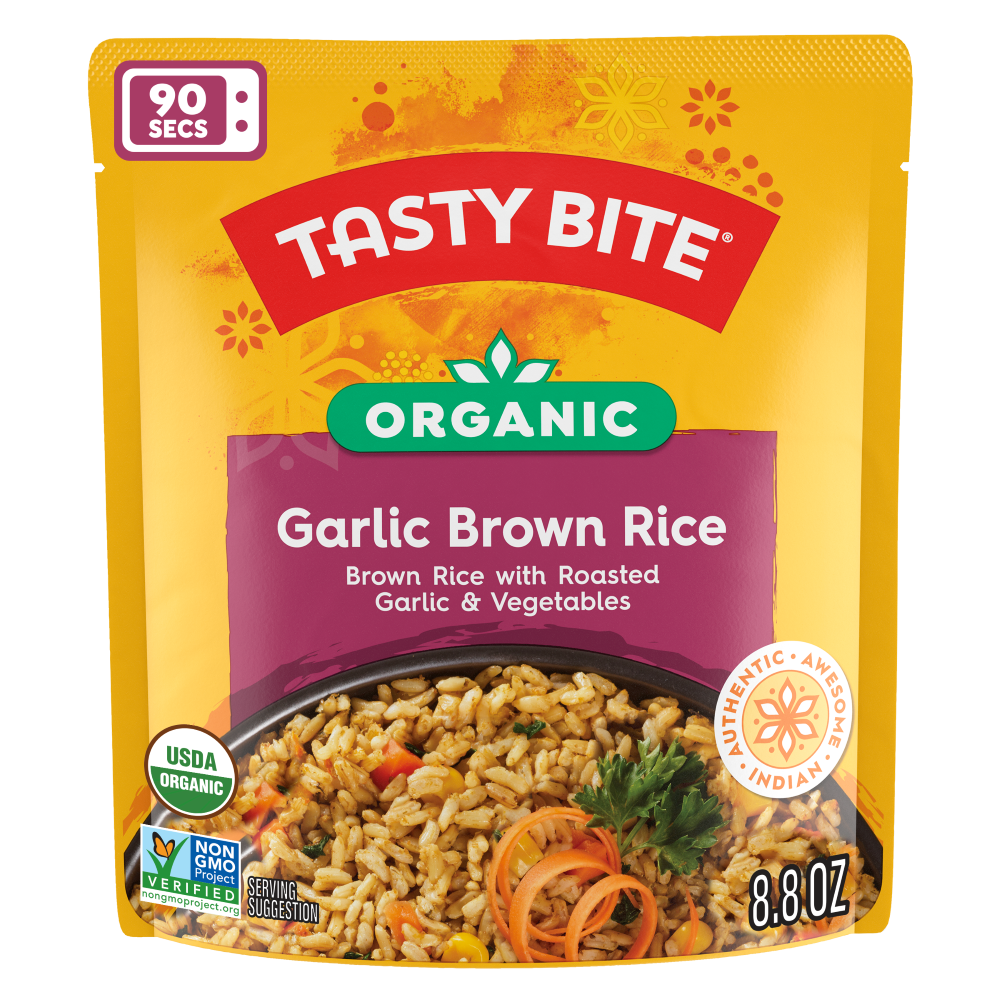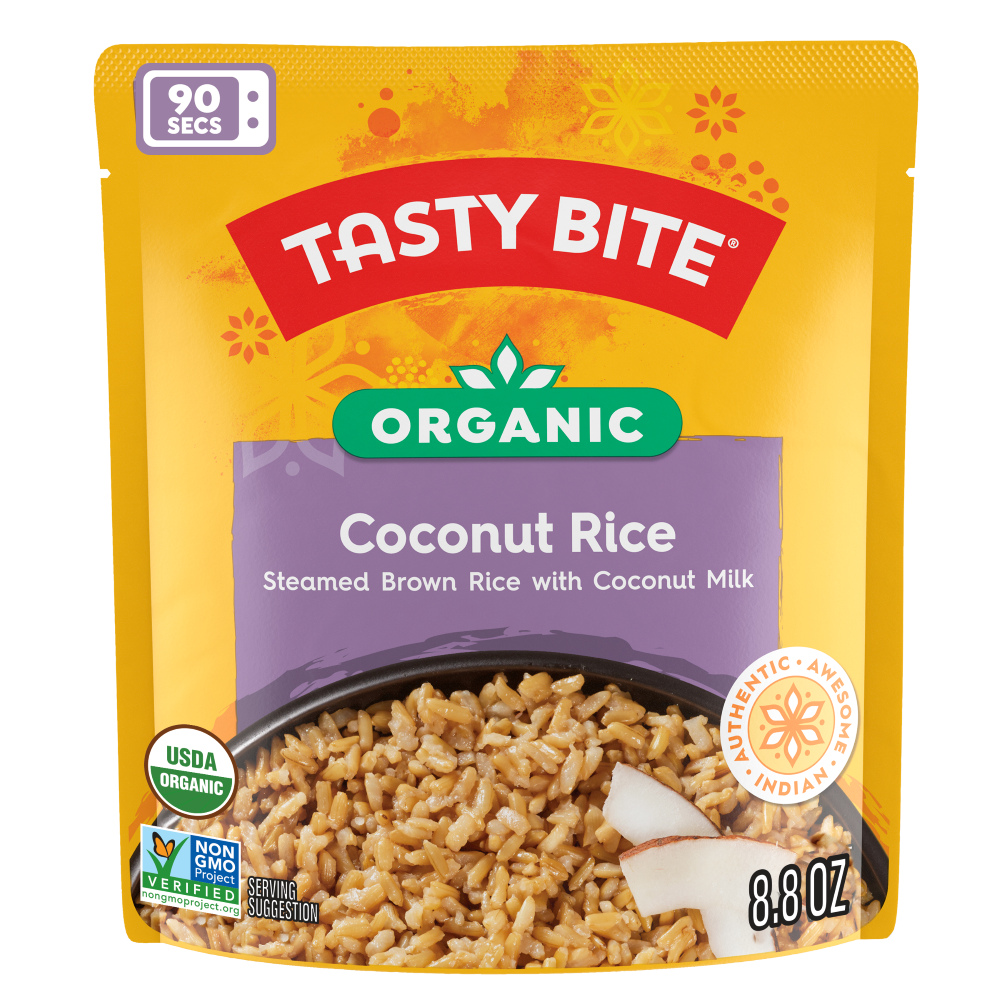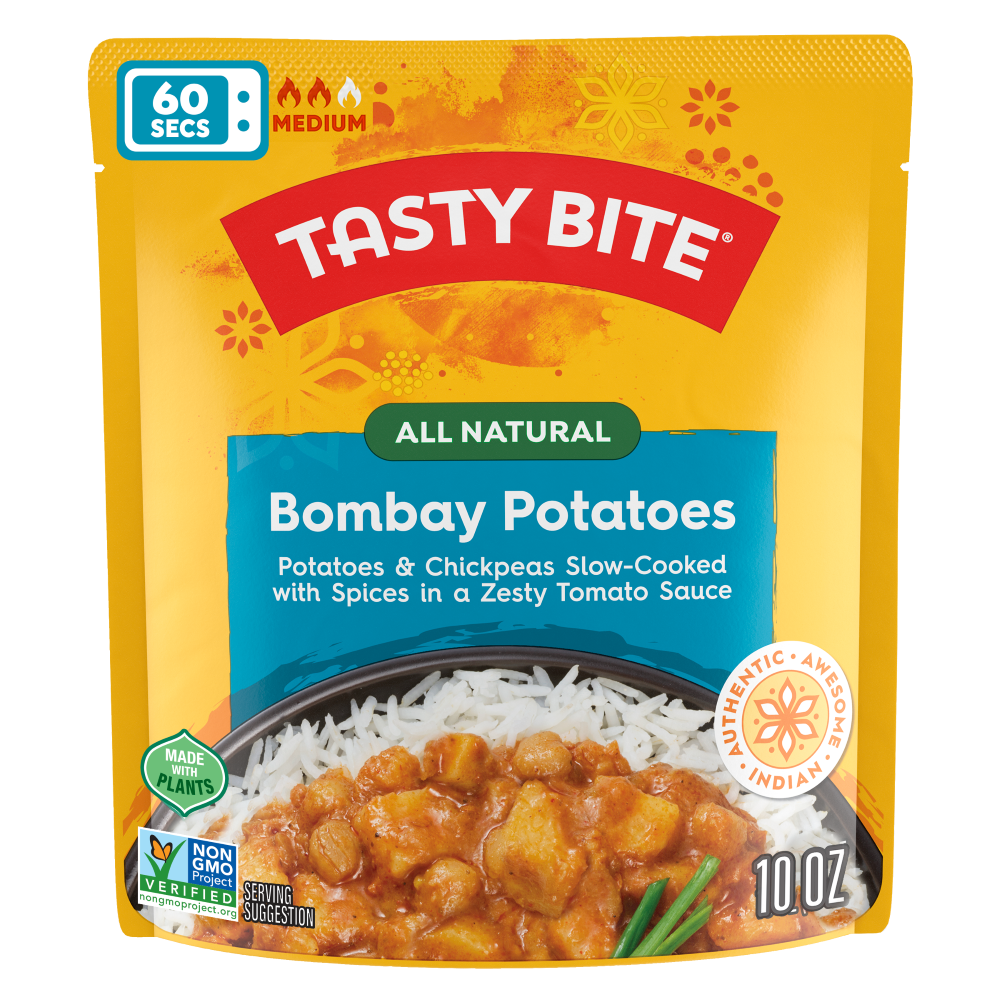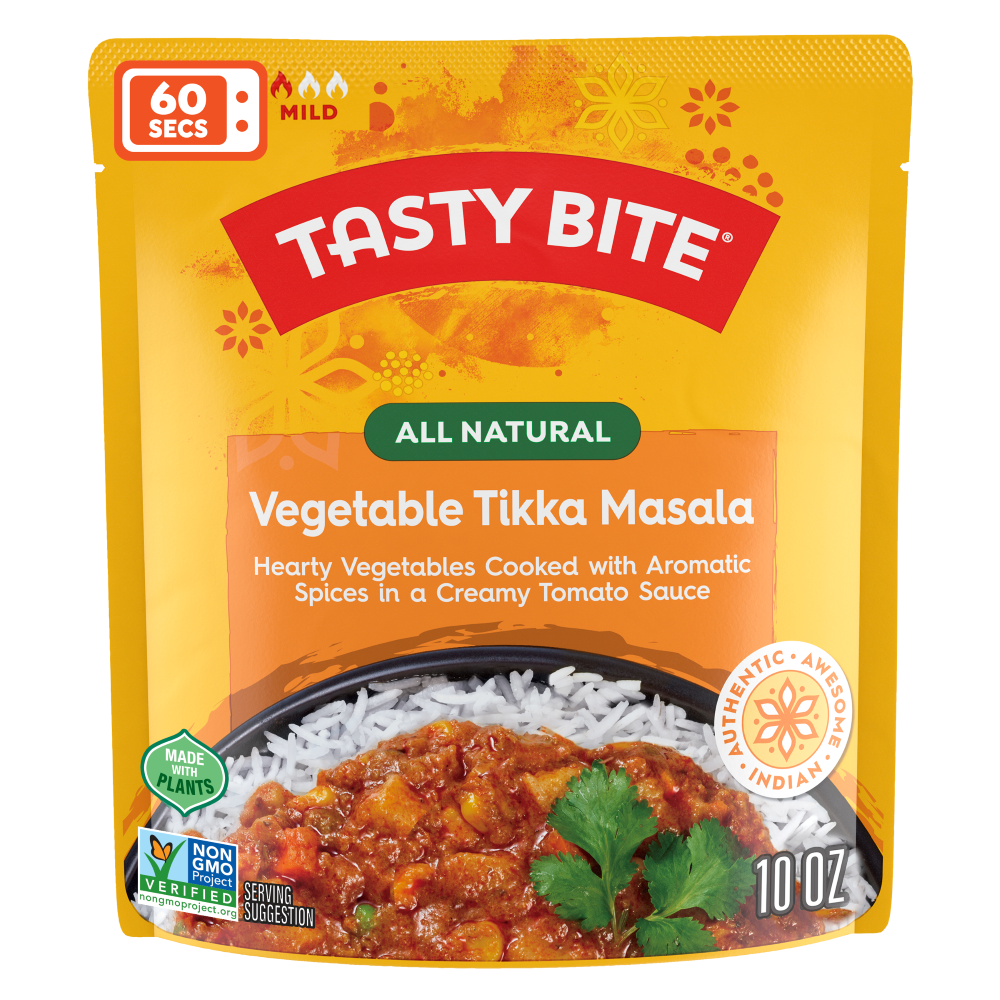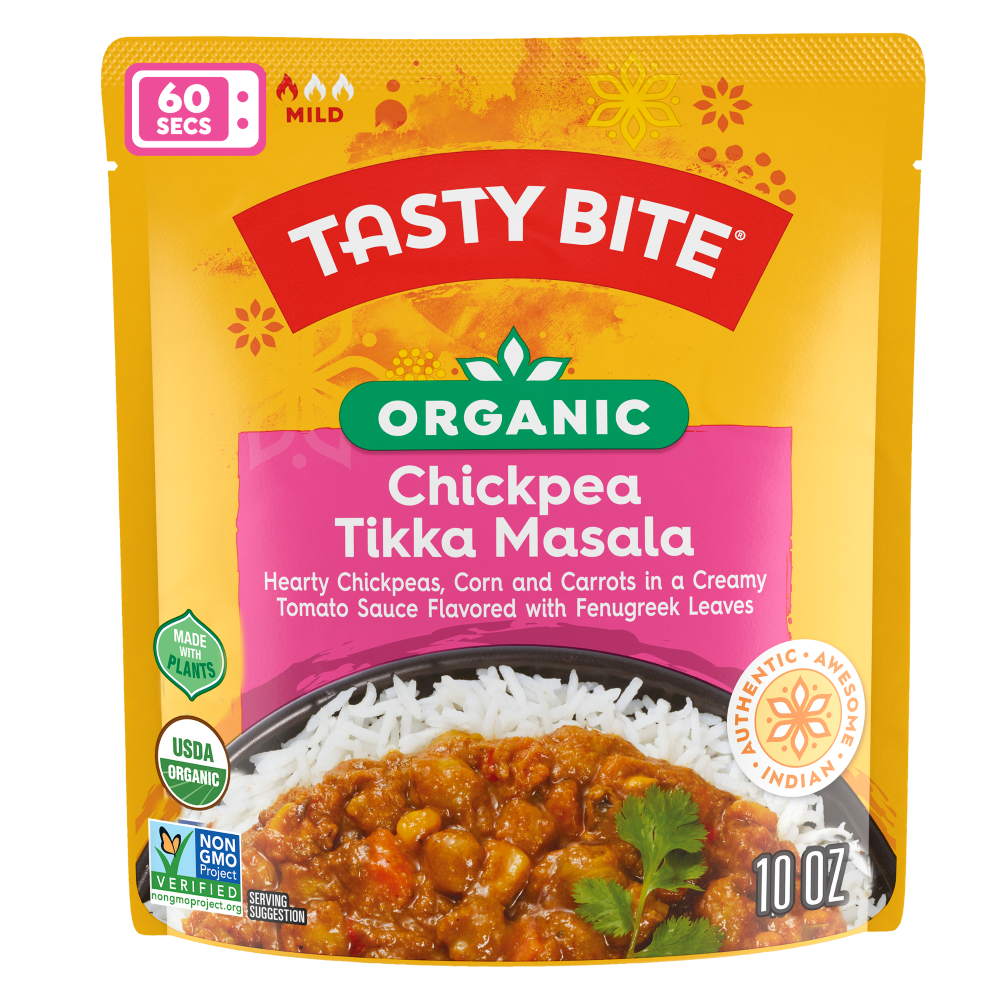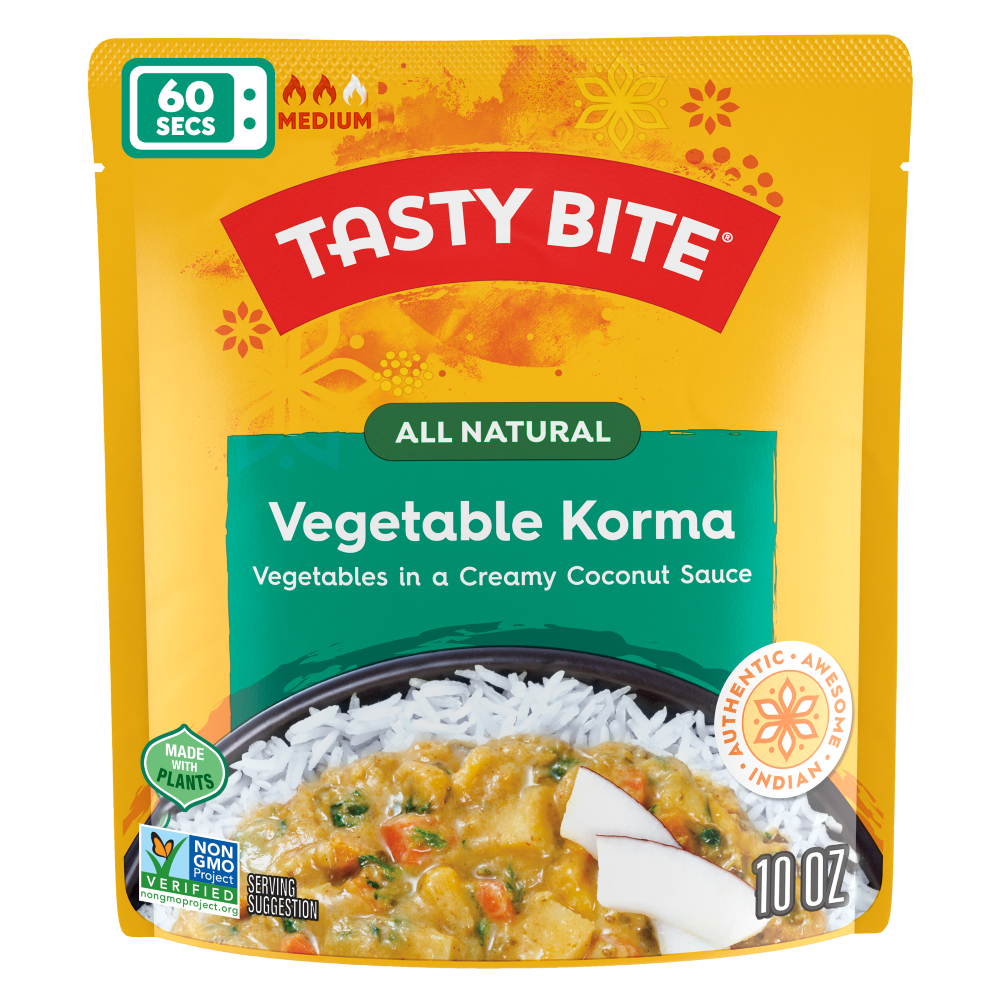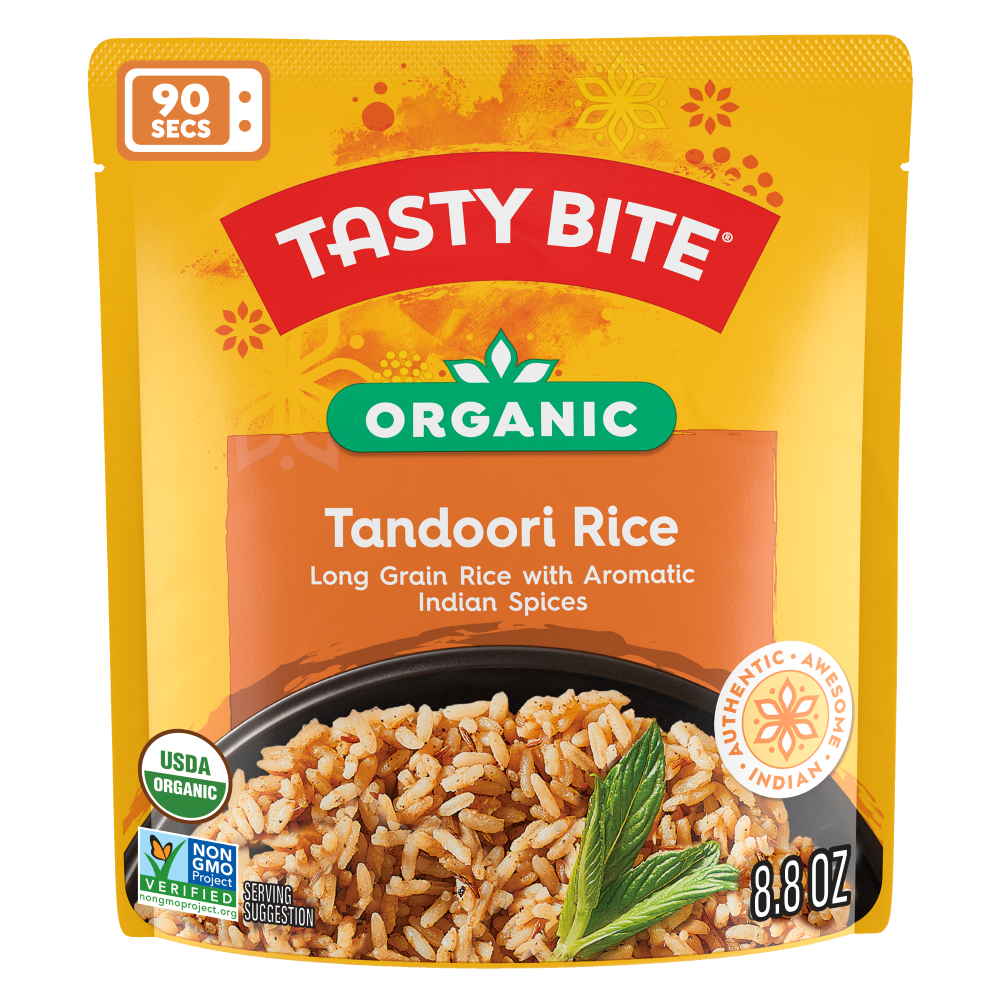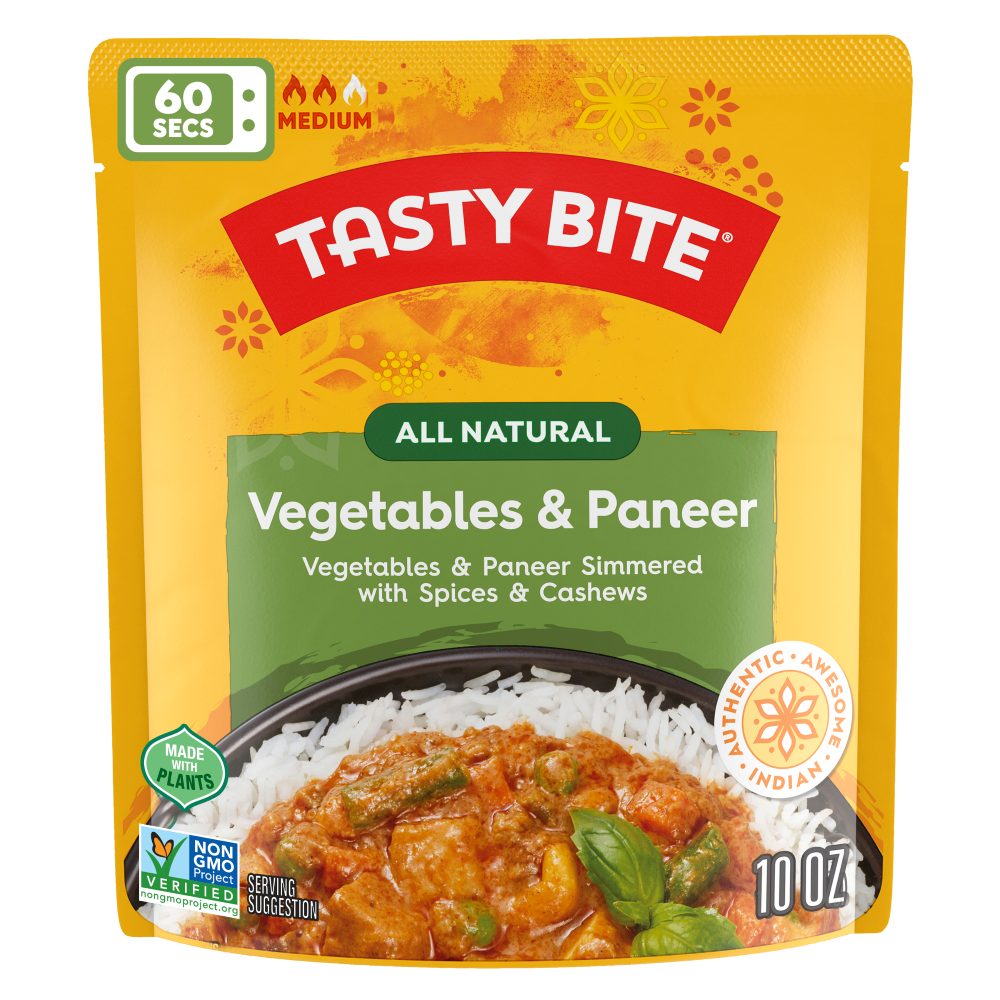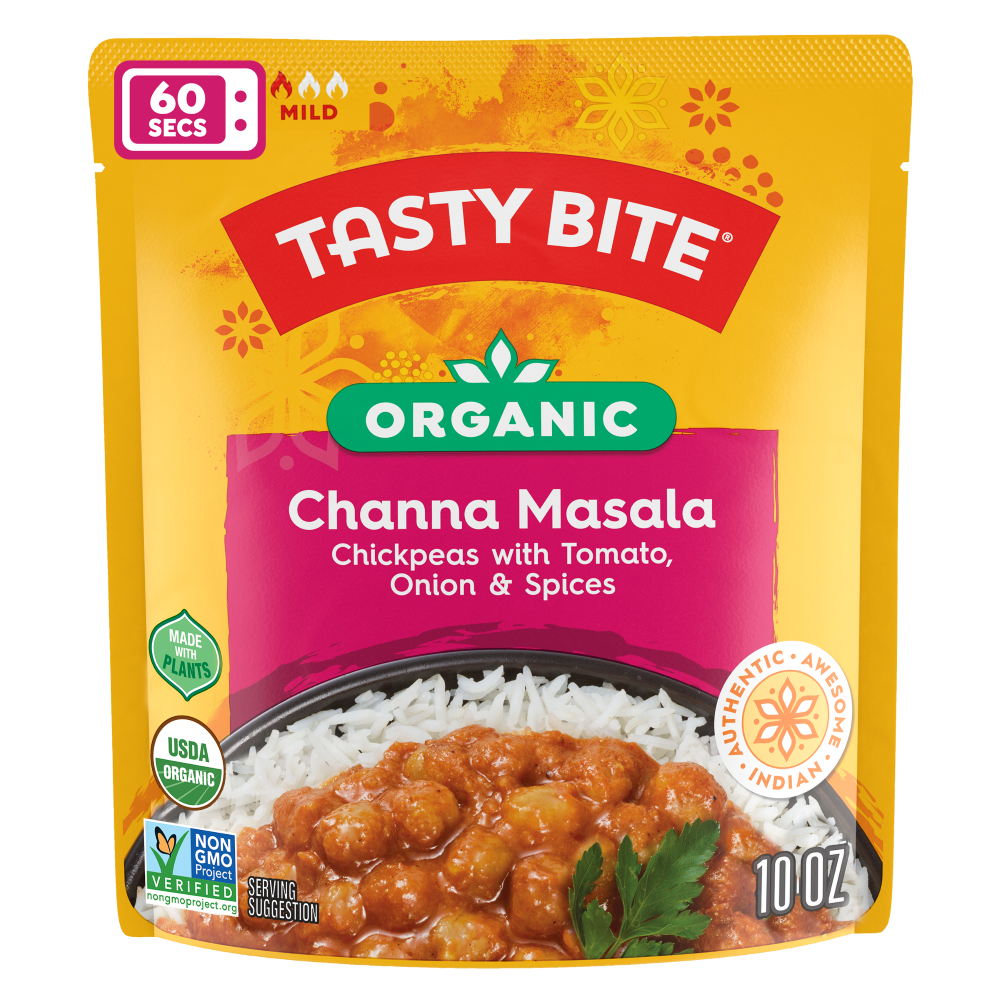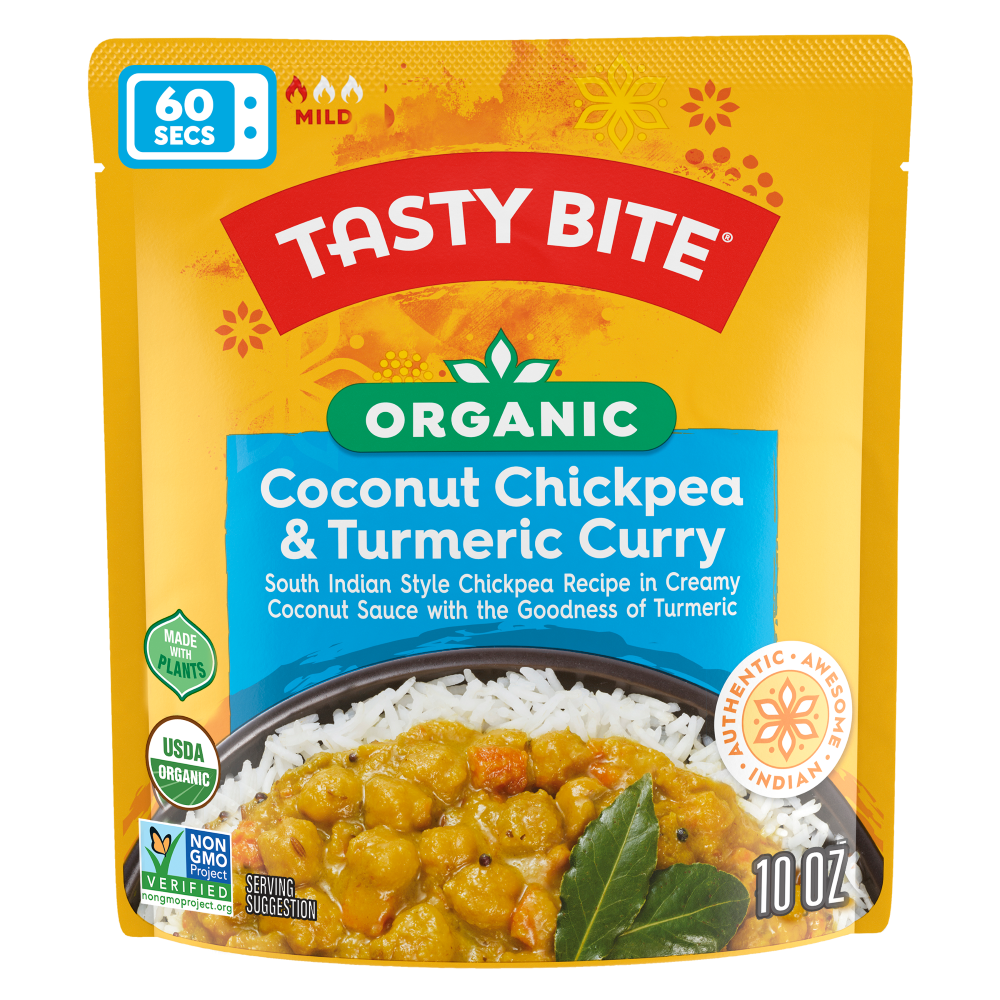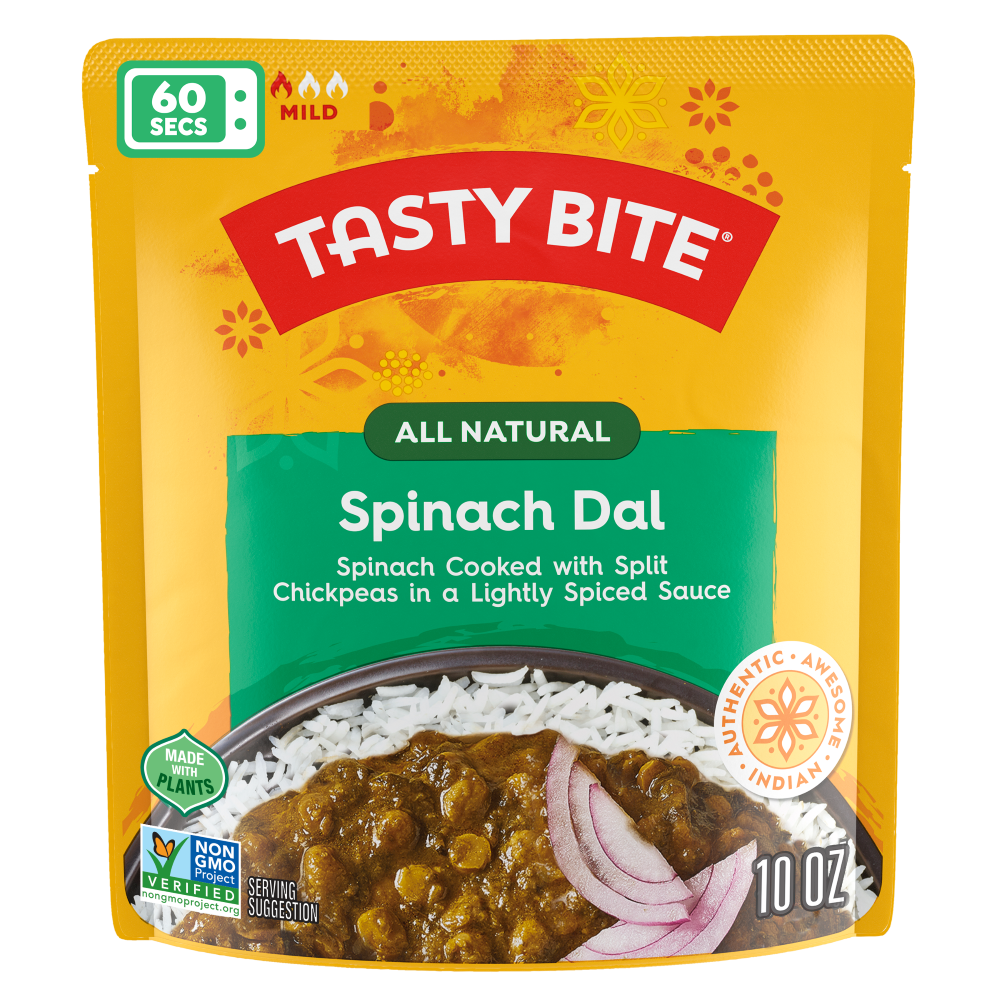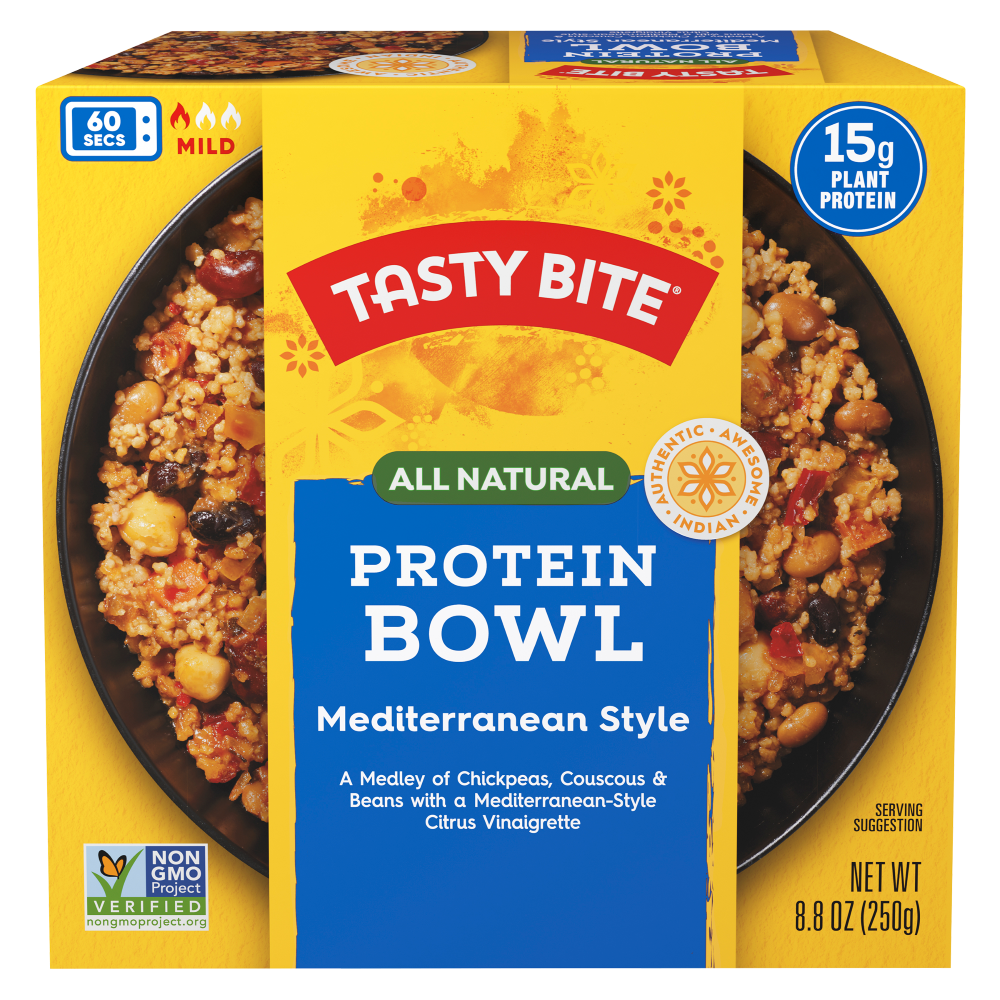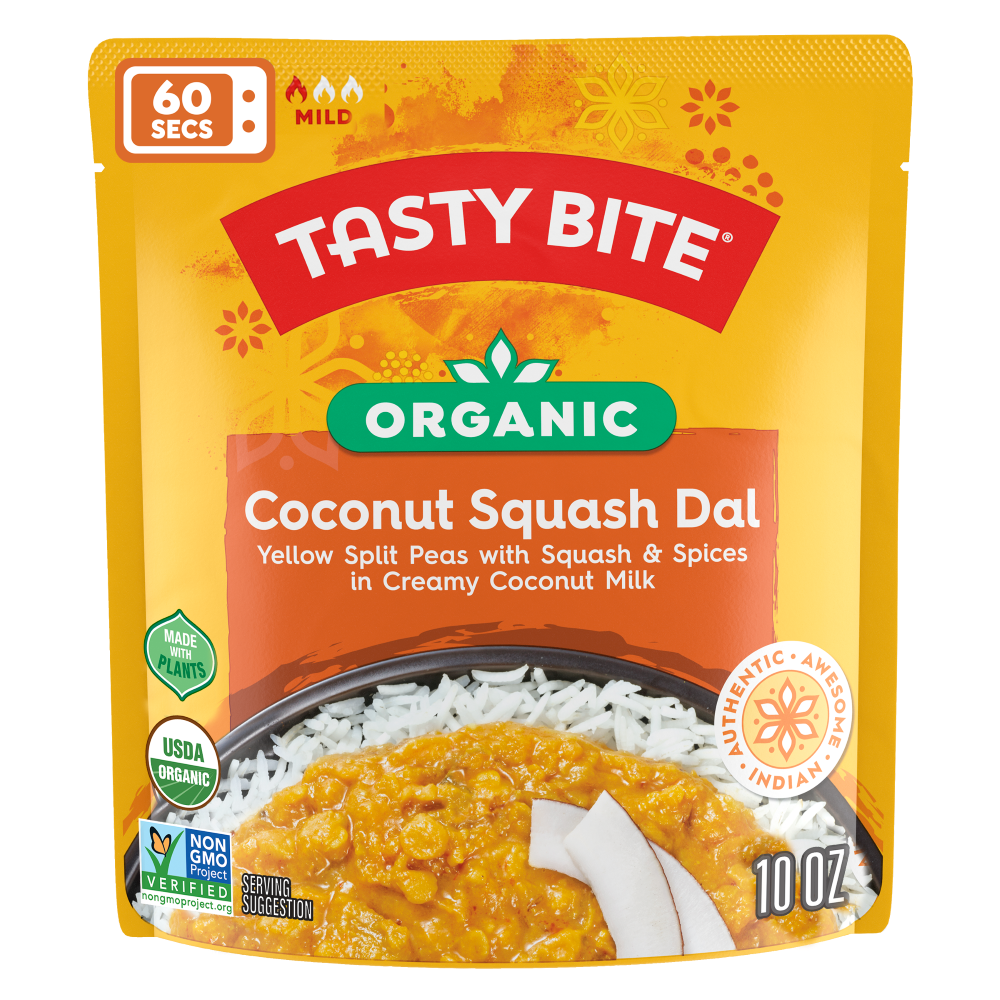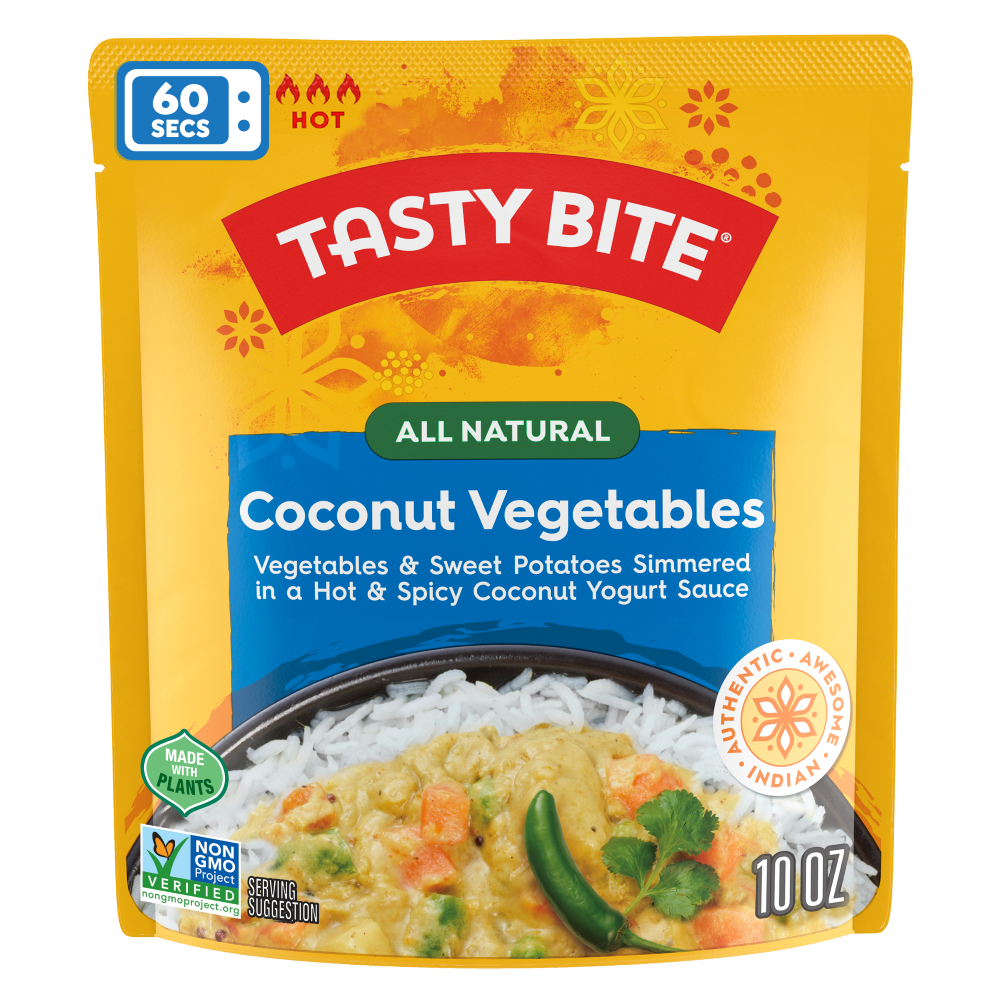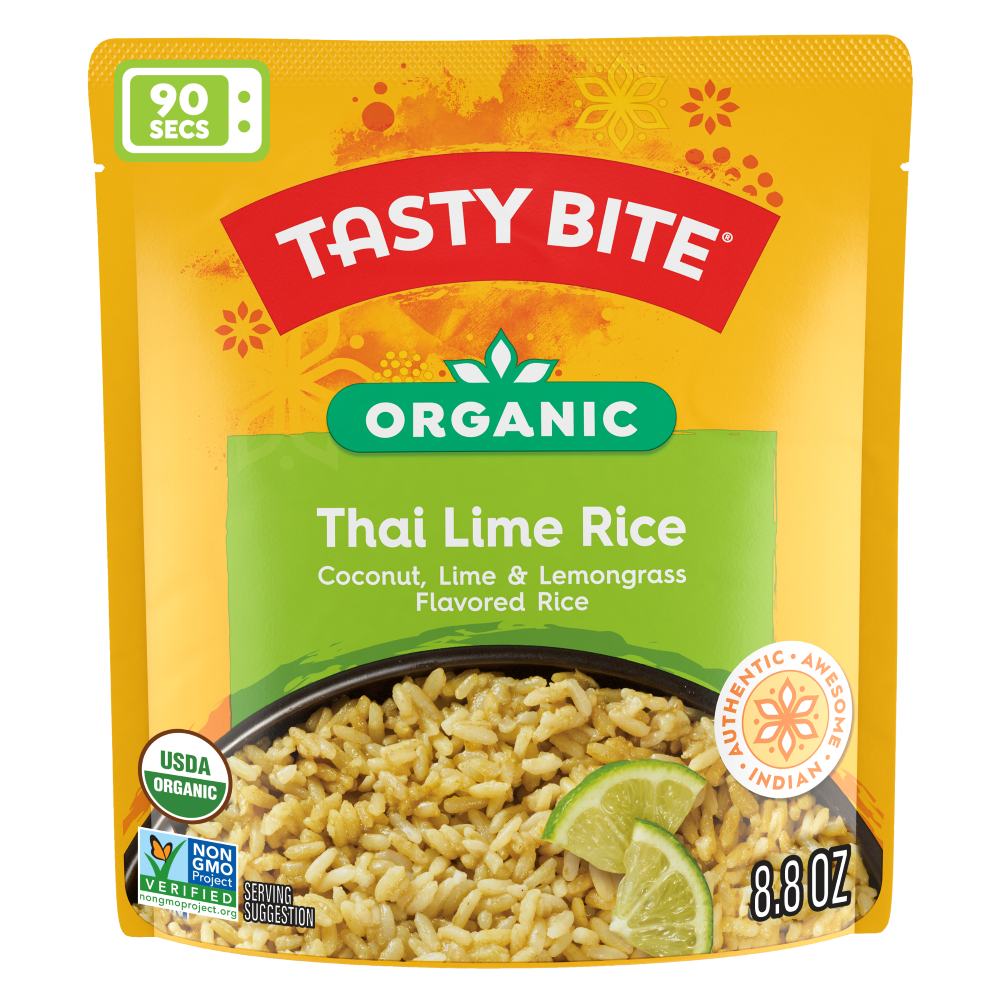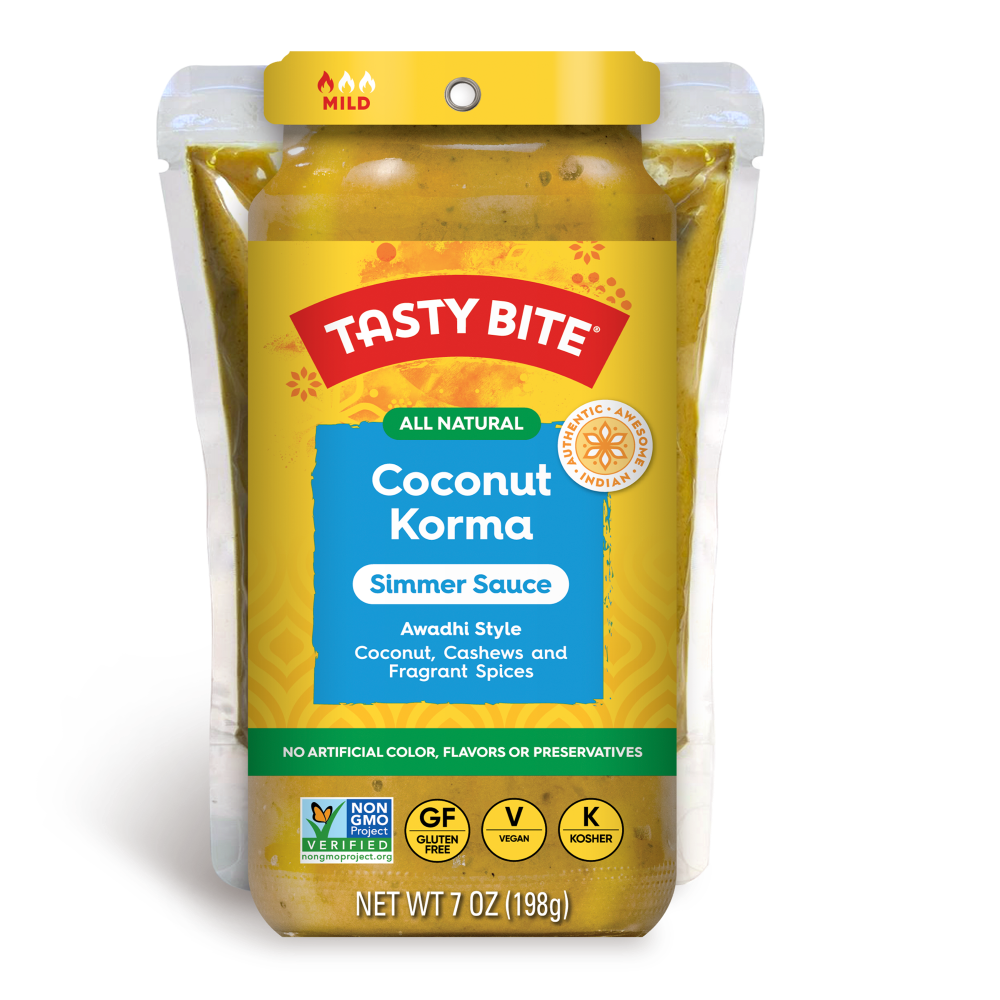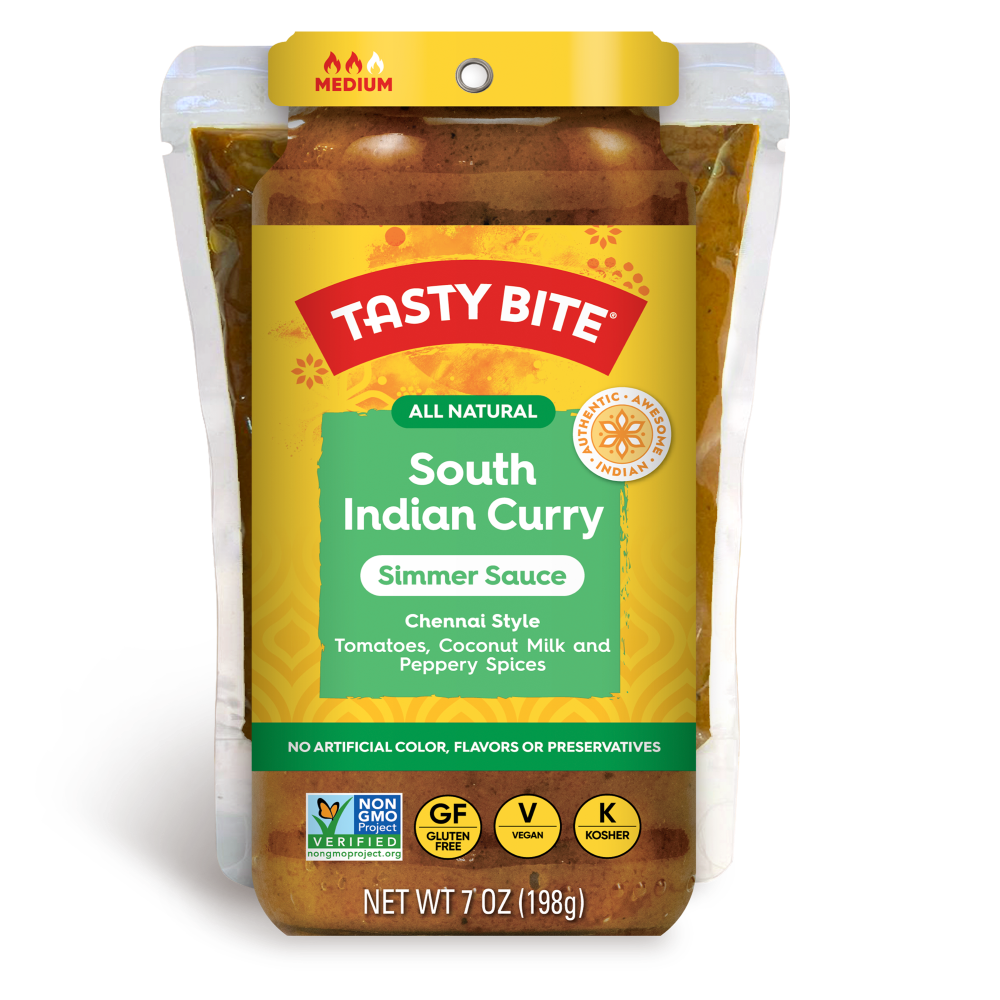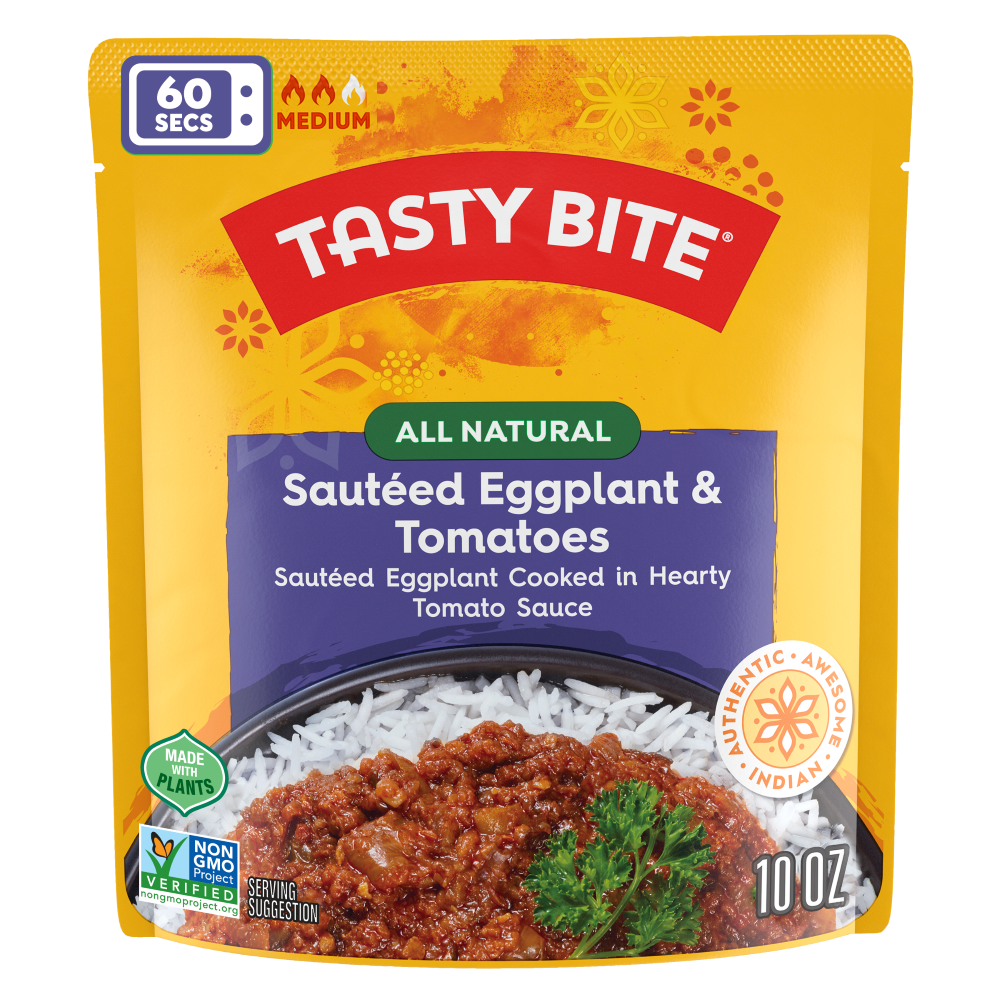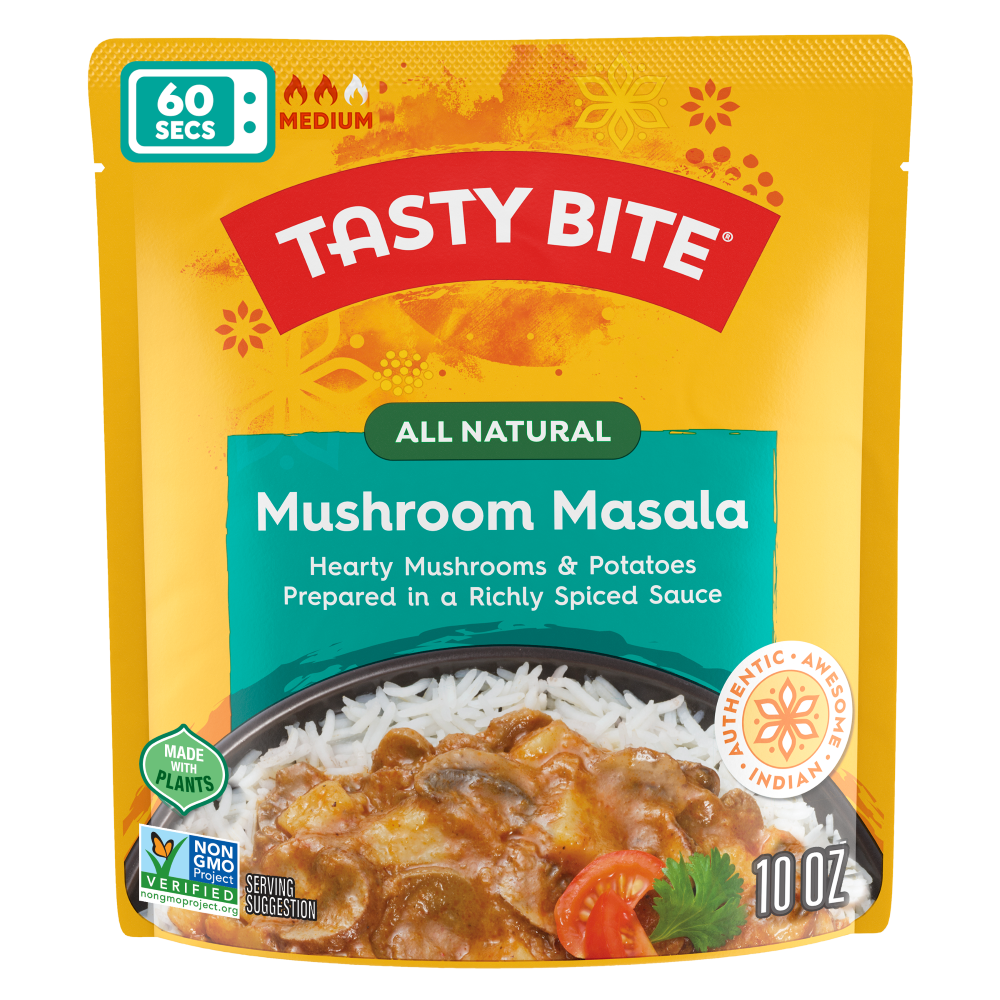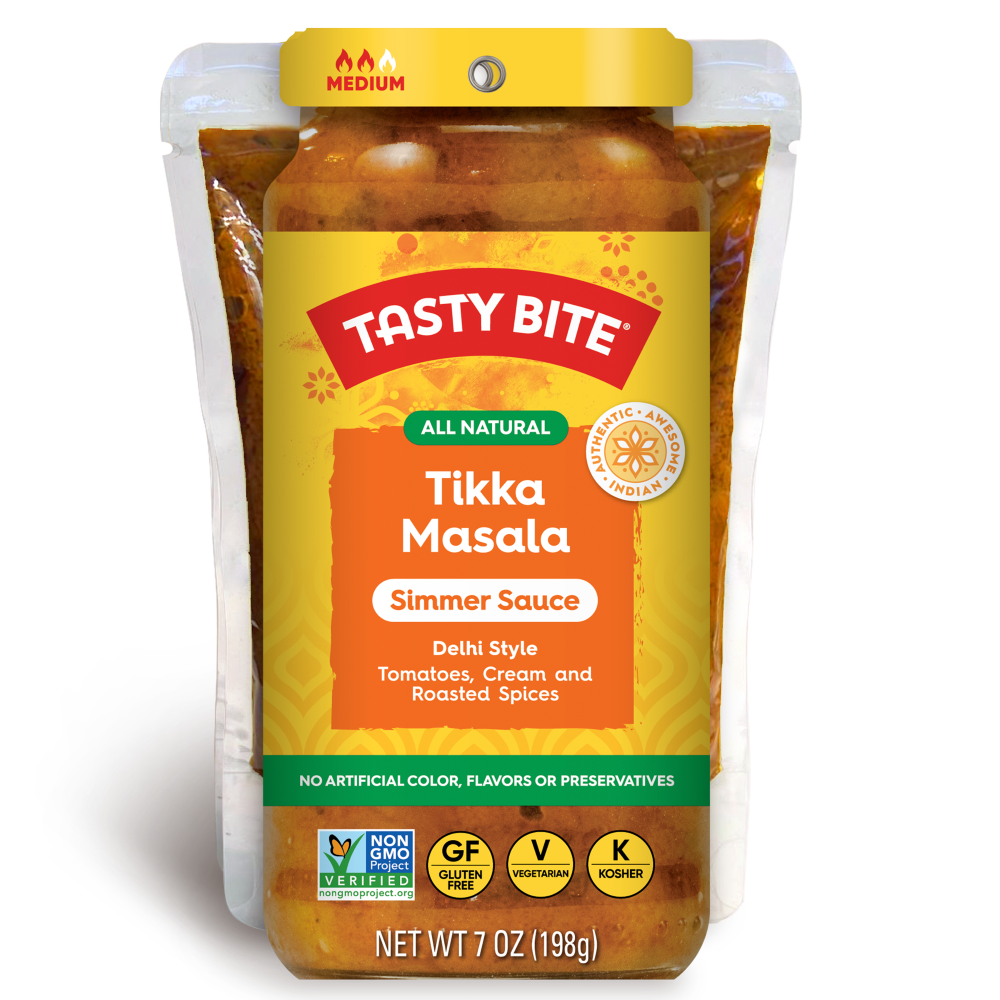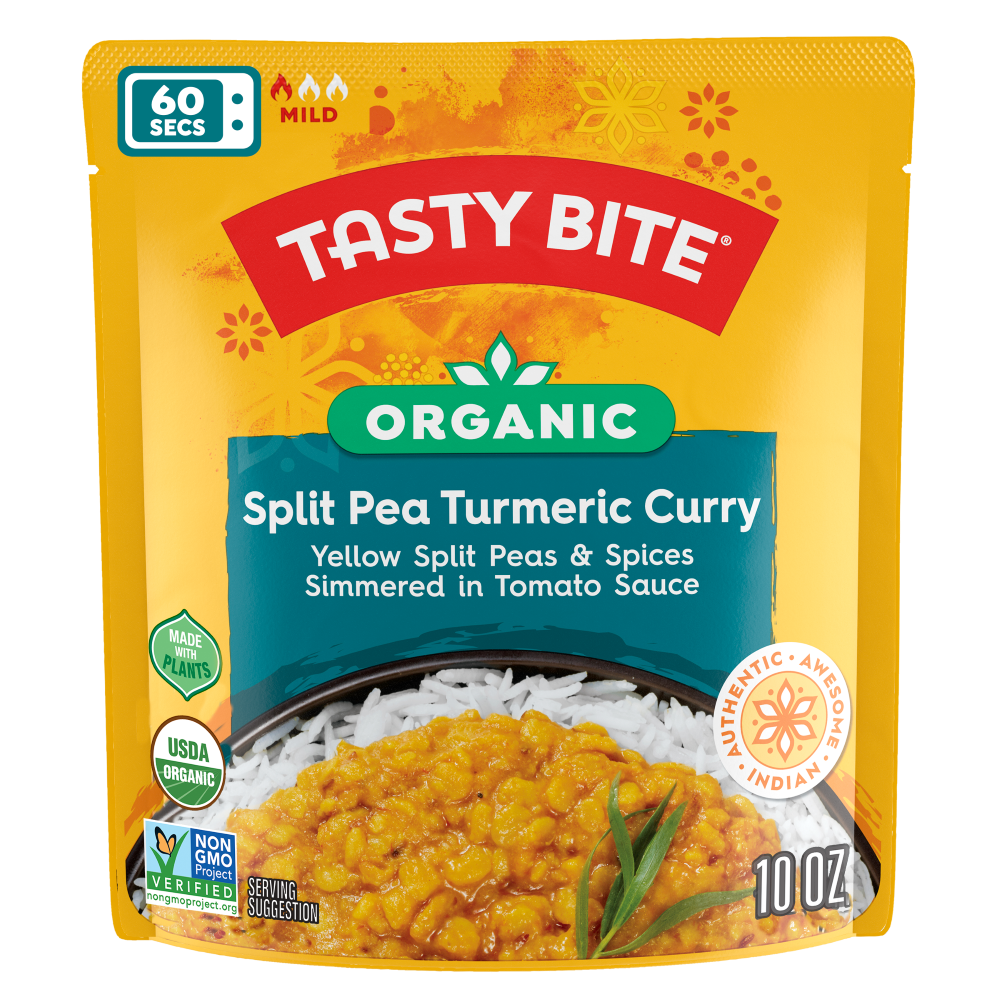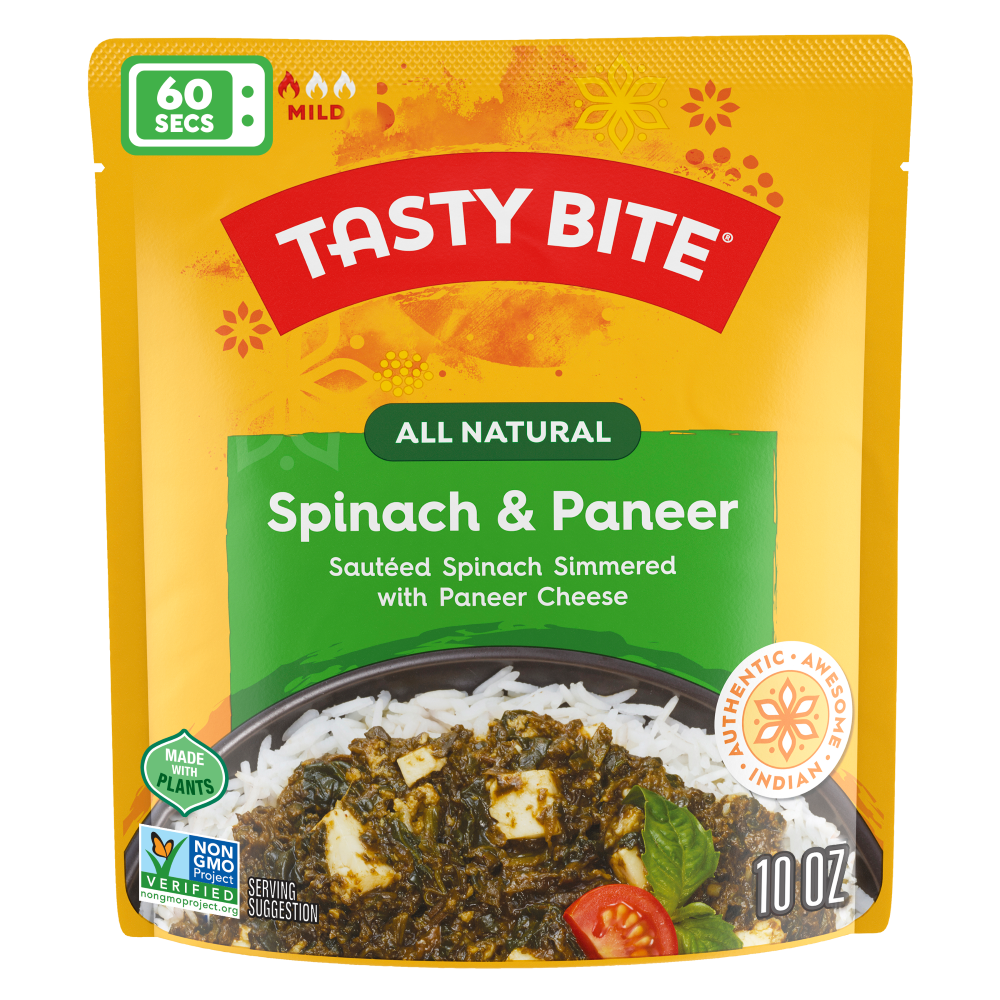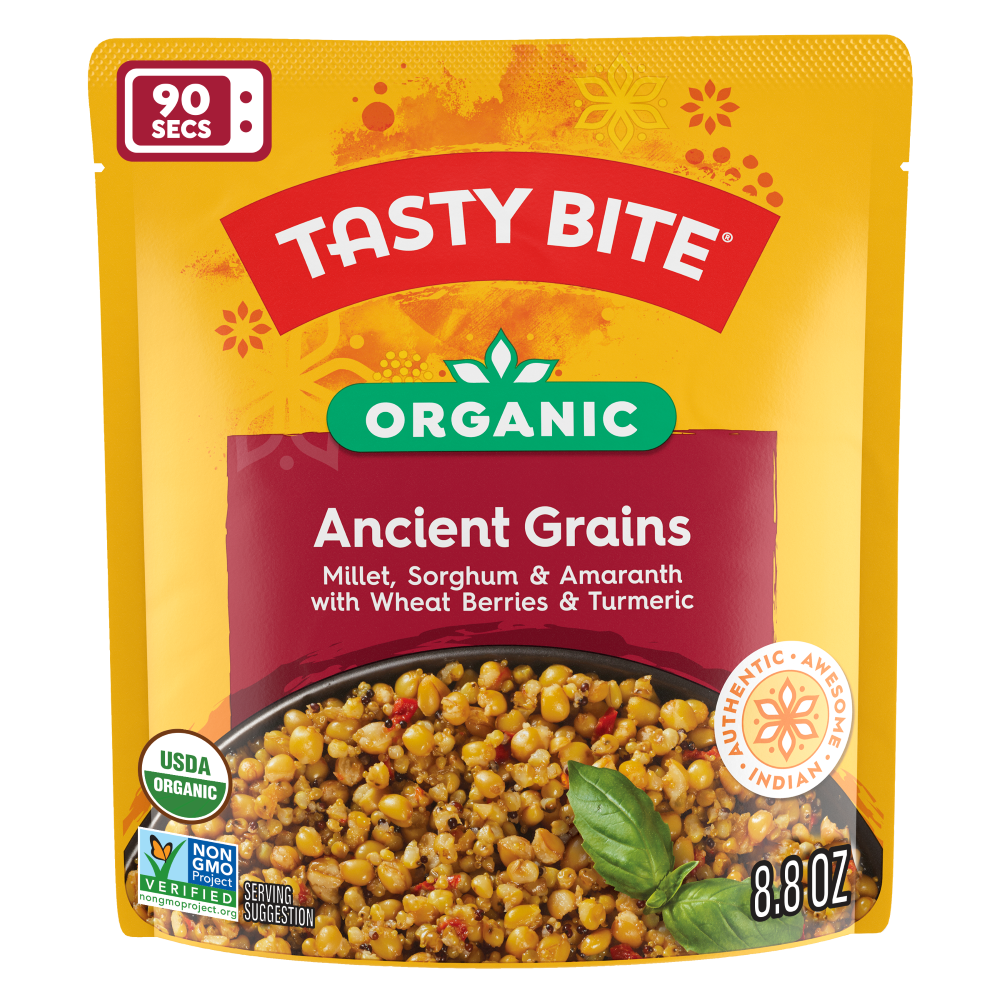From the Heart of India

Our Story
Our mission is to free people from boring meals. For over 25 years, Tasty Bite has made authentic Indian cuisine — including entrées, rices and bowls — using real ingredients. All our products are ready to eat in under two minutes because we believe you should always have a tasty and healthy meal at your fingertips.
You’ll never find any artificial ingredients in our delicious food because Tasty Bite remains passionate about the vibrant culinary culture of India. Find a story in every bite.


Our ingredients
We know our customers have adventurous palates, but they also care about what they put into their bodies. We care deeply about that, too, which is why we use authentic Indian recipes to make our entrees with real ingredients like cumin, turmeric, ginger, legumes and hearty vegetables. Every Tasty Bite product is all-natural and/or 100% organic, and Non-GMO Certified.
Our Ingredient Philosophy
We’re flavor fanatics, so we don’t use anything but the best, all-natural ingredients and spices in every Tasty Bite® product. Discover our world of flavors and their benefits below.
Basmati Rice
-
Fact #1
Considered the world's most aromatic and longest grain of any grain variety, the word Basmati variously means "Full of Aroma" the "prince of fragrance" or the "perfumed one".
-
Fact #2
India is the largest producer of Basmati rice, all of which is grown in the northwestern regions of the country.
-
Fact #3
Harvested during the Diwali season or the Indian festival of lights, this has been around for centuries and was the favorite of the Moghul Emperors.
Black Lentils
-
Fact #1
Rich in protein, Black lentils were named by Health.com as one of the "6 Surprising Superfoods" due to their levels of iron and fiber.
-
Fact #2
The bean is black when harvested. Once shelled and polished the black "skin" reveals an ivory white colored pea no larger than ½ cm.
-
Fact #3
Also known as "Urad Dal," Black Gram lentils originated in India and are today largerly grown in India, Myanmar and Australia.
Brown Rice
-
Fact #1
This is perhaps the healthiest way to consume rice. Brown rice is revealed when the Rice Paddy grain is shelled after harvest losing it's outer "husk".
-
Fact #2
As the name indicates, the grain has a brown coat of fiber rich bran which when further "polished" reveals the more familiar white rice.
-
Fact #3
Brown rice contains fiber, lipids, amino acids and a cocktail of vitamins & minerals including vitamin B, manganese, magnesium and phosphorus.
Cardamom
-
Fact #1
Black cardamom is one of the most expensive spices by weight.
-
Fact #2
In the Middle East, cardamom pods are ground into a powder and brewed together with coffee.
-
Fact #3
Cardamom seeds can be chewed like gum to freshen breath.
Cashew Nuts
-
Fact #1
The cashew tree is native to Brazil but it was brought to Goa, India by the Portuguese in the mid 16th century. From there, it spread throughout Asia and became very popular in many cuisines.
-
Fact #2
The largest cashew tree in the world grows in Brazil. It covers around 80,000 square feet and produces over 60,000 fruits per year. Some estimate that the tree is over 1000 years old.
-
Fact #3
The cashew nut is actually a seed that grows at the end of a fruit (called a cashew apple).
Chickpeas
-
Fact #1
Chickpeas are one of the earliest cultivated legumes: 7,500-year-old remains have been found in the Middle East.
-
Fact #2
During the first World War, chickpeas were roasted and brewed as a coffee substitute in Germany
-
Fact #3
India grows the most chickpeas in the world. They are consumed in many different ways, including raw, boiled, fried, or ground into a flour.
Coconut Milk
-
Fact #1
It is a rich source of dietary fiber and several minerals including Manganese, Copper, Phosphorus, Iron etc.
-
Fact #2
Coconut milk is the white liquid that is extracted from grated coconut.
-
Fact #3
Coconut milk's rich creamy taste is due to it oil or far content. However, it contains the more beneficial saturated Fatty acids (MCFA), particularly one called Lauric acid that might protect the body from infections & viruses.
Coriander
-
Fact #1
Coriander is called Cilantro in North America. It also goes by the name Chinese Parsley.
-
Fact #2
It is used in 2 very distinct forms. The fresh coriander "leaf" and the dried and often coarsely ground "seeds".
-
Fact #3
Coriander seeds are used in cooking in a powdered form. Roasting the seeds and powdering them imparts a lovely aroma to food.
Cumin
-
Fact #1
India produces 70% of the world's cumin, but it consumes 90% of its own production.
-
Fact #2
In ancient Egypt, cumin was used as a spice as well as a preservative for mummification.
-
Fact #3
Cumin is a plant, but only the dried seeds that grow inside its fruit are used as a spice.
Galangal
-
Fact #1
It was originally grown in Indonesia for medicinal and culinary uses, but it spread to Thailand, Vietnam, Myanmar and India as its unique flavor became popular in Southeast Asian cuisine.
-
Fact #2
Galangal is in the same family as ginger, although it has a much stronger taste.
-
Fact #3
Galangal is known by many different names including Galanga, Laos Root, and Garingal.
Find this ingredient in:
Ginger
-
Fact #1
Ginger is popular around the world, but it originated in India and China. When buying in the store, look for ginger root with the least amount of knots and/or branching.
-
Fact #2
In ancient times, ginger was used as a food preservative as well as a treatment for digestive problems. It was exported from India to the Roman Empire nearly 2000 years ago!
-
Fact #3
Ginger is considered by many as a superfood mainly for its extensive use in ancient medicine and even today as an ingredient in several home remedies.
Paneer
-
Fact #1
Paneer is a fresh cheese that softens but doesn't melt. This allows it to maintain its consistency and form when cooked.
-
Fact #2
Paneer is the most popular cheese in India and is used in a variety of different meals It is usually made from cow's milk, but it can also be made from the milk of goats and sheep.
-
Fact #3
Paneer is a great source of calcium, which makes it especially popular in vegetarian cuisine.
Find this ingredient in:
Spinach
-
Fact #1
Spinach is a great source of iron. A 180-gram serving contains 6 mg. That's 50% more than a hamburger of the same serving size!
-
Fact #2
Did you know that during World War I, French soldiers drank spinach-infused wine for added nutrients!
-
Fact #3
Spinach was native to Persia (now Iran) before it was introduced to China and India in the 7th century. It wasn't until the 12th century that it was introduced to Europe. It was first grown in the United States in 1806.
Turmeric
-
Fact #1
Turmeric is a plant in the ginger family and native to India, where it has been used for cooking and religious ceremonies for thousands of years.
-
Fact #2
Turmeric has a strong orange-yellow color and is also used to color food.
-
Fact #3
In traditional folk medicine, Turmeric paste was used as an antiseptic to treat cuts and wounds. It was also eaten to treat a variety of stomach and liver problems.

sustainability

Farming
One way we reduce our brand’s environmental impact is by collaborating with farmers and suppliers. As part of our efforts, we’ve established the Sustainability Center and the Training & Development lab for farmer extension programs. In addition, we’re passionate about using all-natural techniques to improve yield. On the Tasty Bite organic farm, we rely on crop rotation, vermicomposting, natural fertilizers and natural pest control methods.

Energy
You shouldn’t have to compromise taste or your health for the betterment of the planet. We practice extensive usage of alternative and renewable sources of energy and vow to reduce our carbon footprint to the greatest extent possible. Here’s how we do it:
Solar panels mounted at our manufacturing facility, which helped generate 288 MWHr last year
All fuel we use in our boilers comes from sugarcane briquettes, which accounts for over 70% of our total energy consumption
Wind power accounted for nearly 9% of our total power consumption in 2021
Through these choices, we want to inspire the entire food industry to do better. The future of our planet depends on it.

Community
We are proud to be part of a large community of farmers. The vegetables used in our products are grown on local farms, where we also teach organic and sustainable farming techniques. As members of the broader community, we also strive to do all we can for those around us with scholarship funds for our employees’ children as well as local and international disaster relief.

Discover Our Products below


Spinach & Paneer – 6 Pack



